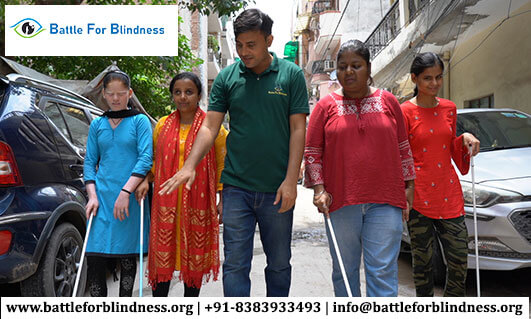In a world primarily designed for sighted individuals, those who are visually impaired face numerous challenges in their daily lives. However, thanks to the incredible bond between humans and animals, one particular type of assistance animal has emerged as a beacon of hope for visually impaired individuals – guide dogs. These remarkable canine companions are trained to provide guidance, support, and independence to their handlers, enhancing their quality of life and opening doors to new opportunities. In this blog, we will explore the invaluable role that guide dogs play in aiding visually impaired individuals.
Understanding Guide Dogs
Guide dogs, also known as seeing-eye dogs, are highly trained service animals that assist individuals with visual impairments or blindness. These dogs undergo rigorous training to perform various tasks, enabling their handlers to navigate through the world with confidence and autonomy. They are typically selected from specific breeds, such as Labrador Retrievers, Golden Retrievers, and German Shepherds, due to their intelligence, temperament, and suitability for guide work.
The Training Process
The journey to becoming a guide dog involves extensive training and socialization. Organizations specializing in guide dog training carefully select and raise puppies in a controlled environment, exposing them to various sights, sounds, and experiences to ensure they grow up well-rounded and adaptable. As the puppies mature, they receive intensive training that includes obedience, mobility skills, and specialized commands to navigate obstacles and hazards.
Guide dogs are trained to safely guide their handlers along sidewalks, navigate street crossings, locate stairs and elevators, avoid obstacles, and find specific destinations, among other crucial tasks. The training process typically takes several months, during which the dogs and their handlers develop a strong bond built on trust and mutual understanding.
The Partnership
When a guide dog completes its training, it is matched with a visually impaired individual who has applied for a guide dog. The matching process considers factors such as the person’s lifestyle, mobility needs, and personality to ensure a harmonious partnership. Once paired, the visually impaired individual and their guide dog undergo an intensive training program together to establish a strong bond and learn how to effectively communicate and work as a team.
The Benefits of Guide Dogs
Guide dogs provide numerous benefits to visually impaired individuals, significantly enhancing their independence and mobility. Here are some key advantages:
- Increased Safety: Guide dogs act as a constant companion, providing a physical barrier between their handlers and potential hazards. They help navigate through crowded areas, avoid obstacles, and alert their handlers to dangers, such as oncoming traffic or low-hanging obstacles.
- Enhanced Mobility: Guide dogs are trained to recognize and remember familiar routes, helping their handlers travel with ease. They can navigate complex environments, such as busy streets, public transportation, and crowded spaces, allowing visually impaired individuals to go about their daily activities more confidently.
- Emotional Support: Beyond their practical assistance, guide dogs also offer invaluable emotional support. The bond between a guide dog and its handler is built on trust, companionship, and unconditional love. This relationship can help alleviate feelings of isolation, boost confidence, and provide a source of comfort and companionship.
- Improved Social Interaction: Guide dogs serve as social catalysts, encouraging positive interactions between their handlers and the public. They often become conversation starters and help bridge the gap between visually impaired individuals and others, fostering a more inclusive society.
Conclusion
Guide dogs are incredible service animals that play a pivotal role in supporting visually impaired individuals. Through their extensive training, unwavering loyalty, and unmatched skills, these canine companions enable their handlers to live more independent, fulfilling lives. The impact of guide dogs goes beyond practical assistance, as they bring emotional support, increased safety, enhanced mobility, and improved social interaction to the lives of visually impaired individuals. The remarkable partnership between humans and guide dogs showcases the power of the human-animal bond and the positive difference it can make in the lives of those facing visual challenges.





